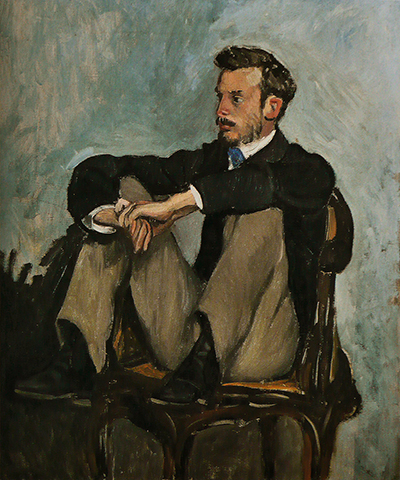The Portrait of Renoir, an oil on canvas, was painted by Frederic Bazille in 1867 when the artist was only twenty-six years old. The canvas measures 62 cm x 51cm and has been exhibited in the Musee D’Orsay, Paris, since 2013.
Bazille's original impetus to become an artist came from his admiration for Delacroix, Theodore Rousseau and Gustave Courbet. His connection with the group of artists who later became known as the Impressionists began when he took classes at the studio of Charles Gleyre in Paris in 1862. Here, he met the likes of Pierre-Auguste Renoir, Albert Sisley and befriended members of the extended group of artists such as Claude Monet and Edouard Manet.
Some commentators think that Bazille was an important part of the group because of his wealth and generosity. Others,believe that his best plein-air productions such as The Pink Dress (1864) and The Family Reunion (1867) are equal to the work of other like-minded artists at that time. Had he survived, Bazille would most likely have contributed to the first impressionist exhibition of 1874. As well as being an avid recorder of the artistic scene (in, for example, Studio, Rue de la Condamine), Bazille was also interested in portraiture and still- lives as evidenced in Portrait of Renoir.
In 1867, Bazille shared a studio with Renoir and it is in response to Frederic Bazille at His Easel, also dated 1867 and held as part of the Musee D'Orsay collection in Paris, that Bazille gave his portrait of Renoir. At this time, when the artists could not afford models, they often reverted to still-life work and portraiture of each other.
It is interesting to compare and contrast the two works. Bazille's has an incompleteness about it with the broader brushstrokes of the background possibly hinting at later impressionist techniques. Bazille also exhibits a much darker palette and greater anatomical precision due to his medical training. This is exhibited in the musculature of the body and the detailed facial elements. He also used this great attention to detail in his nude portraits. It would have been interesting to see how his approach would have softened with more time and experience.
In Portrait of Renoir, Bazille shows some of the many potentialities that would have been fulfilled and enhanced had he survived. It is for this reason that the National Gallery of Art, Washington, held an exhibition entitled Frédéric Bazille and the Birth of Impressionism in 2017.




